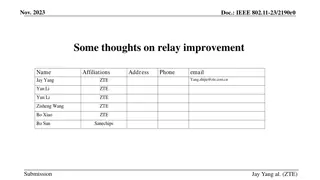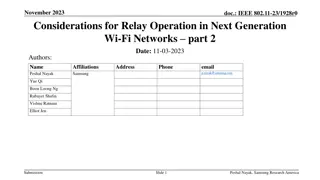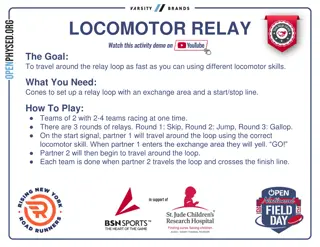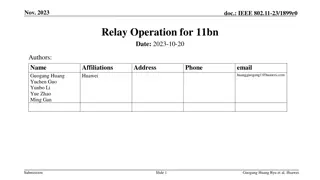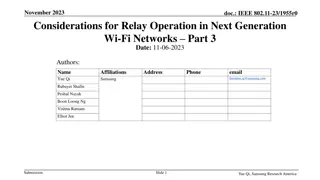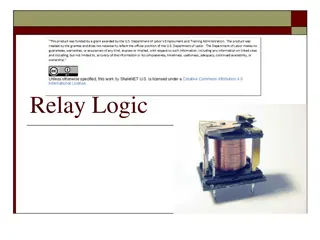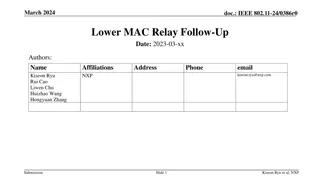
Understanding Relays: Types, Operation, and Applications
Learn all about relays, electromagnetic switches that control circuits by converting low-power signals into high-power currents. Discover the various types of relays, including high voltage, electronic, timer, thermal, and more. Explore how relays work and their essential role in electrical systems.
Download Presentation

Please find below an Image/Link to download the presentation.
The content on the website is provided AS IS for your information and personal use only. It may not be sold, licensed, or shared on other websites without obtaining consent from the author. If you encounter any issues during the download, it is possible that the publisher has removed the file from their server.
You are allowed to download the files provided on this website for personal or commercial use, subject to the condition that they are used lawfully. All files are the property of their respective owners.
The content on the website is provided AS IS for your information and personal use only. It may not be sold, licensed, or shared on other websites without obtaining consent from the author.
E N D
Presentation Transcript
RELAY GT ECE LABS SLIDES BY HELEN YOO
WHAT ARE RELAYS? Electromagnetic switch that operates by electric current that can turn off and on a larger amount of current Work as a switch (turn off/on circuit) and or amplifier (change small current into large current) Usually used when controlling a circuit by an independent low-power signal or several circuits controlled by one signal
HOW IT WORKS? A small current flows into input circuit coil to activate electromagnet that produces a magnetic field around it The energized electromagnet pulls metal bar in the output circuit towards the input circuit to close the output circuit and allow for larger current to flow through the output circuit
TYPES OF RELAYS High voltage relays Specifically for switching high voltages and currents Electronic and semiconductor relays Solid-state relays that switch currents entirely electronically Timer and time-delay relays Triggers outputs for a limited period of time Thermal relays Used when turning on and off to prevent overheating Overcurrent and directional relays Prevent currents from flowing in wrong direction in circuit Frequency protection relays Prevent frequencies from getting too high and/or low

